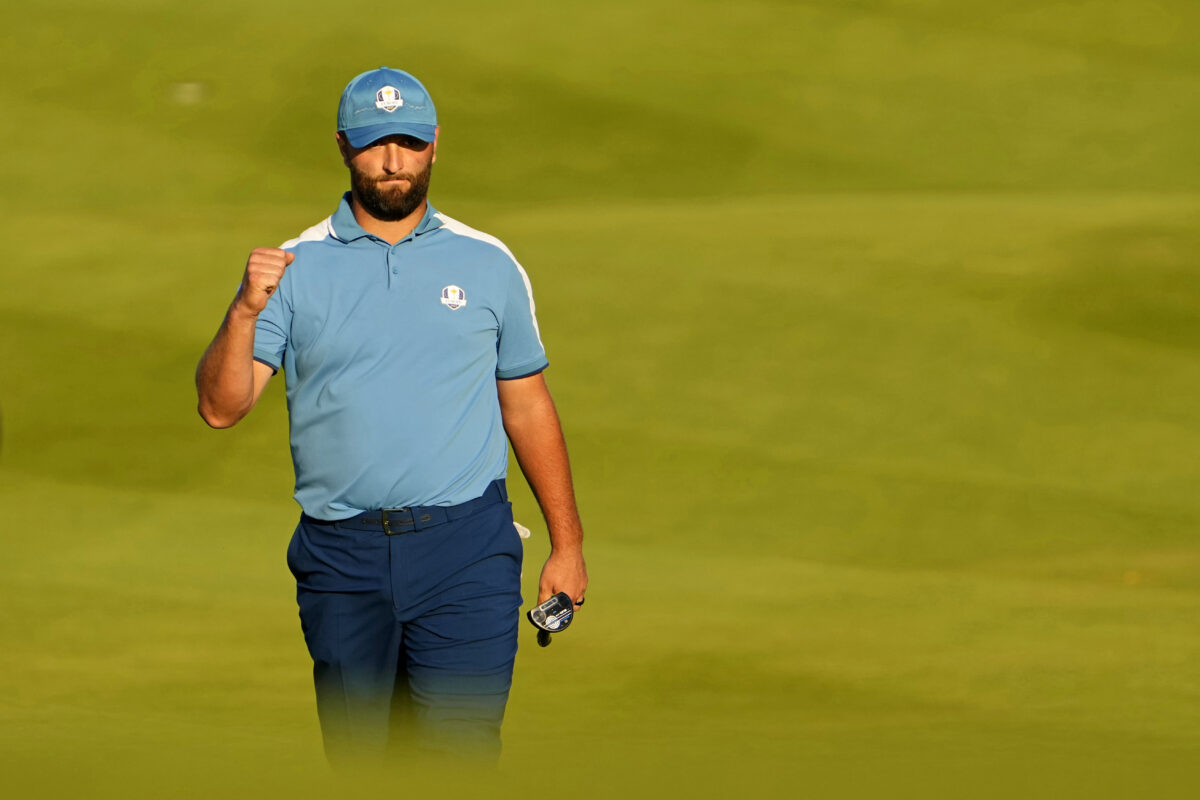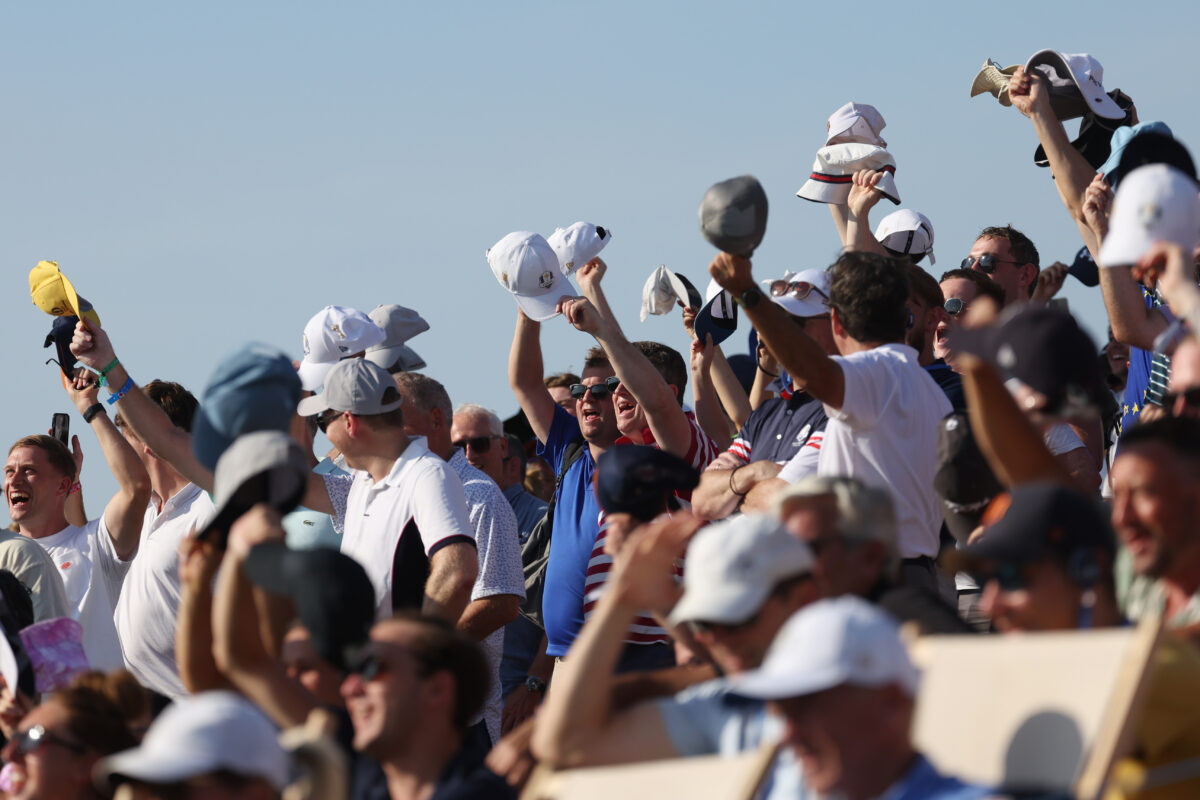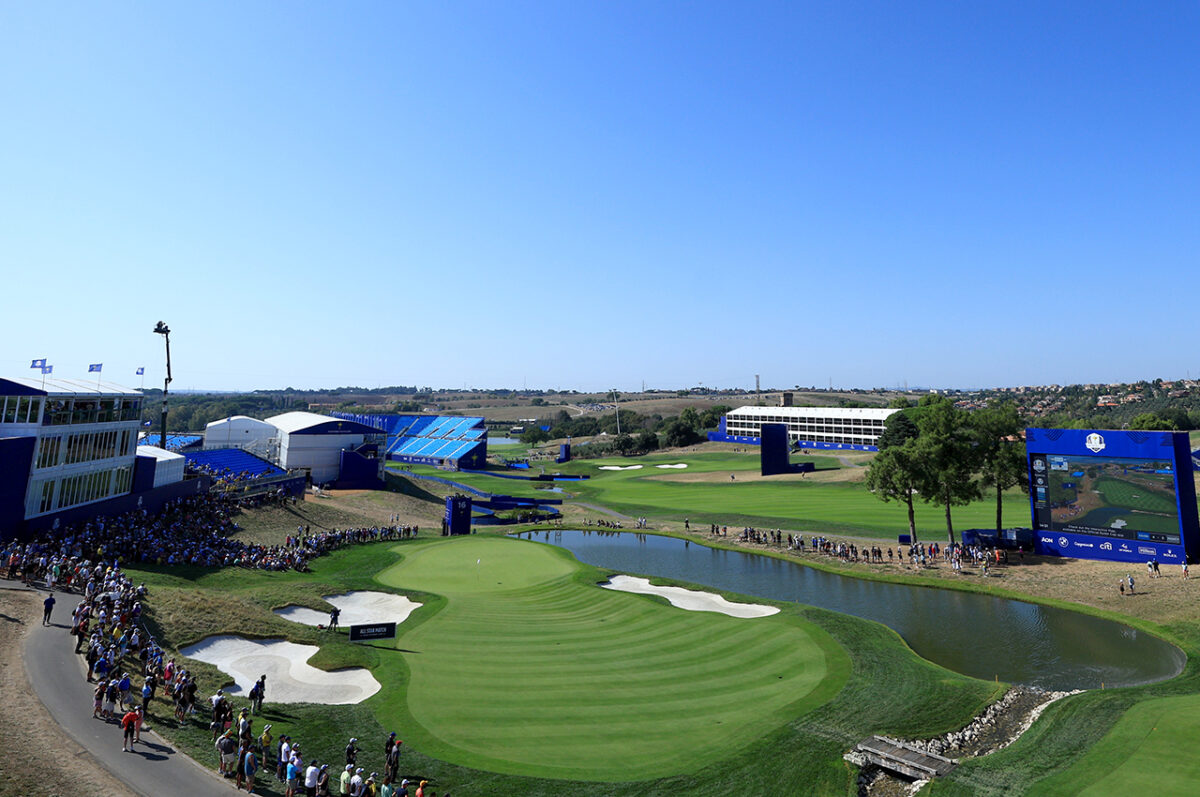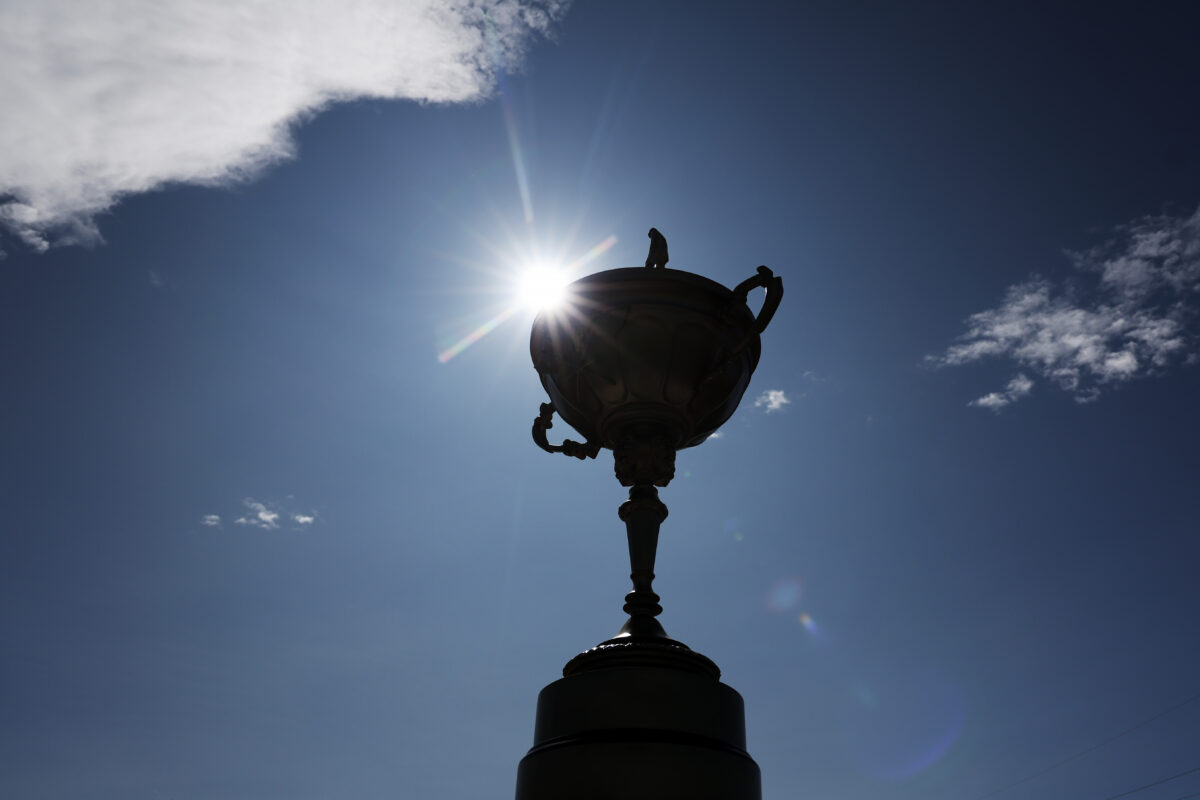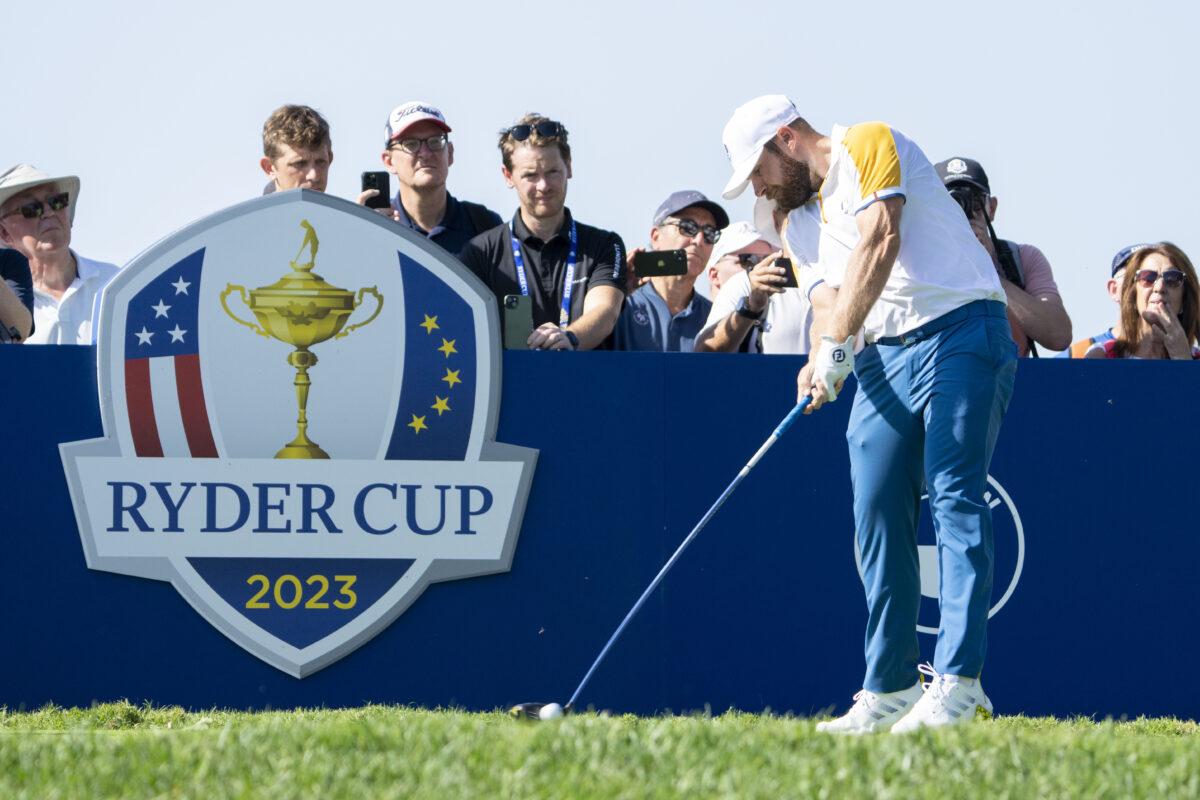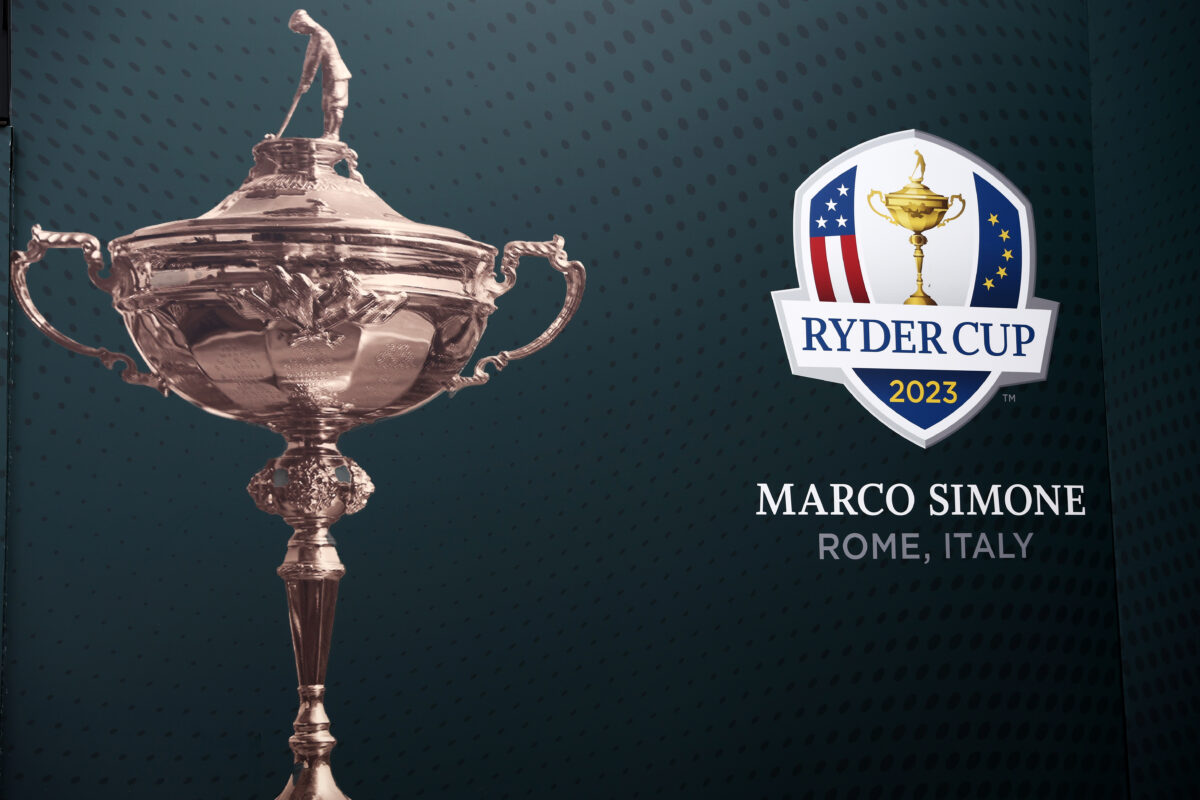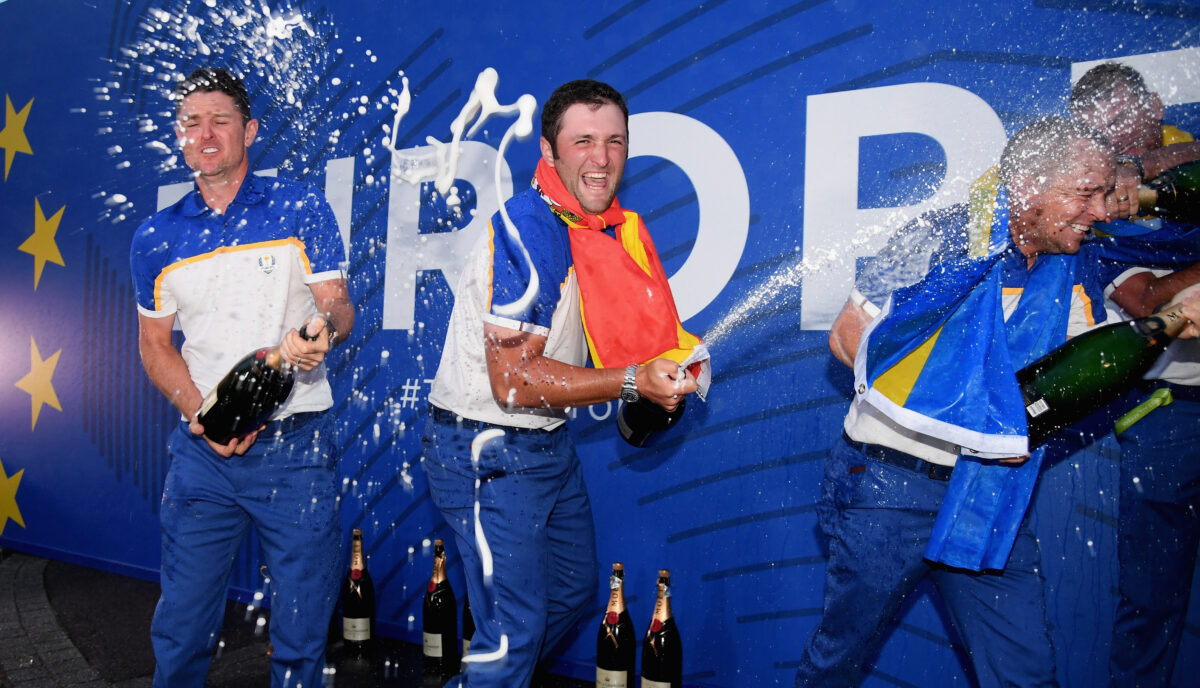Call it the Whipping at Whistling Straits.
At the 43rd Ryder Cup in 2021, Team USA routed Europe like it was 1979, winning 19-9. America’s youth won out over Europe’s experience. The six U.S. Ryder Cup rookies combined to go 14-4-3.
“It seems like the younger they are, the better they play,” said U.S. assistant captain Davis Love III.
It was the first time in 44 years that the U.S. didn’t lose any of the five sessions. By any measure, this was a statement win for Team USA. Not to diminish its achievement, but winning at home wasn’t the U.S. team’s problem, other than a fluky European comeback 2012. The hosting U.S. won in 2016, but its loss in Paris two years later meant the pressure was on America to hold serve. Otherwise, it might’ve been back to the drawing board, given the Euros had won four of the previous five meetings and nine of the last 12 in the biennial match. Which brings us to the question that won’t be fully answered until this week: Did the U.S. beatdown in 2021 represent a sea change in Ryder Cup fortunes?
The real validation of America’s new formula for success is to win on the road for the first time since 1993 when the 44th Cup is held in Rome at Marco Simone Golf and Country Club on Sept. 24-26. Asked for a quick rush to judgment during the U.S. team’s closing press conference at Whistling Straits two years ago, one of America’s impressive rookies, Xander Schauffele, refused to take the bait and balked at looking ahead.
“I’m sorry to burst your bubble, but we are just going to enjoy now,” he said. “You’re thinking way too far ahead of us, for me, personally, so we’re going to enjoy this one for now and collect ourselves shortly after.”
But Jordan Spieth, twice on losing teams overseas in 2014 and 2018, has experienced the pain of playing on foreign soil and stepped up to answer the question. He compared the U.S. romp to a Presidents Cup and already, to borrow a phrase from New England Patriots coach Bill Belichick, was on to Italy.
“I think that this is unfinished business,” he said. “It’s one thing to win it over here and it is a lot easier to do so, and it is harder to win over there. If we play like we did this week, the score will look the same over there in a couple years, and that’s what we’re here for.”
Spieth, who turned 30 in July, was in diapers the last time Team USA beat Europe on the road. Why has the U.S. side – despite consistently having the deeper, more talented team on paper – lost the last six matchups on the road? There is no simple answer.
“That’s a great question,” Hal Sutton, the captain of the U.S. side that lost at home in 2004 at Oakland Hills, said. “If we had the answer, I’m sure we would have already solved it.”
While Sutton’s answer may have a ring of truth to it, it speaks to why the U.S. failed to learn from past mistakes. The U.S. dominance of the event from its humble beginnings in 1927 until Europe’s breakthrough home win in 1985 is ancient history. The captaincy was passed on to the next former major champion – all the better if he was a past PGA Championship winner – for his turn at the helm. In contrast, Englishman Tony Jacklin took charge of Europe from 1983 to 1989 and established a template that could be passed down through the years. Team USA, meanwhile, had its head in the sand as to why it continued to struggle despite often being the favorite.
“They adhered to the mindset that a Ryder Cup among equal talents is essentially random, that sometimes they would play better, and sometimes the Europeans would, but all thoughts of strategy or team building were blown out of proportion. Call it arrogance, complacency, or lack of imagination, but they stuck to this belief even as the results showed a pattern that was anything but random,” wrote Shane Ryan in his book, “The Cup They Couldn’t Lose: America, the Ryder Cup and the Long Road to Whistling Straits,” which provides the definitive explanation for the European renaissance in the Ryder Cup and how America got its groove back.
“The Americans have been too successful for too long on the strength of talent alone to study the lesson,” Ryan wrote. “In that sense, they were victims of their own success, and it would be years before they could humble themselves enough to learn.”
Only Paul Azinger in 2008 built his team with an outside-the-box approach, conceiving the pod system and getting the most out a U.S. lineup that featured the likes of Chad Campbell, Boo Weekley, Ben Curtis and rookie Anthony Kim. They won big at home over a team led by Nick Faldo, who ignored Team Europe’s template. Azinger campaigned for the captaincy again in 2010 in Wales and should’ve been given it. Instead, the PGA of America chose Corey Pavin and a stretch in which each U.S. captain that followed approached the Ryder Cup in his own way, with little to no continuity.
“There were plenty of lessons to be learned,” Ryan writes. “They learned none.”
Ryan devotes a whole chapter of his Ryder Cup book, an interlude titled “Why does Europe win?”, to the seven most-common theories, including old standbys that the Americans just need to play better and Europeans just like each other more. (Ryan quotes an oldie but goodie from a Euro vet explaining their team chemistry: “We get together for a week, we get along, and when it’s over, we all go back to hating Monty.”)
Padraig Harrington, who was captain at Whistling Straits, has his own theory that touches on the mental aspect of the competition and the pressure of expectations.
“We go to try to win the Ryder Cup, whereas the U.S. tries not to lose it,” he said. “Because they’re favorites, because they should win, they’re afraid, whereas we’re the country cousins! We have a point to prove. Even if we did find oil in our backyard, we’d still have a point to prove.”
Sutton isn’t the only American captain at a loss for words as to why Team USA can’t win on the other side of the pond.
“You know, if I could put my finger on it, we would have changed this bleep a long time ago,” Jim Furyk said.
Golfweek talked to several past captains from both sides to try to understand what’s gone wrong and why this could be the year the Americans end their skid.
Hitting rock bottom
The recent uptick for Team USA’s fortunes was born in arguably the team’s lowest moment, when it was blown out in Scotland in 2014. Phil Mickelson publicly aired the team’s dirty laundry during its media session following the defeat and hung out U.S. captain Tom Watson to dry.
“When the mess was over, it was no longer possible to say with any credibility that the Ryder Cup was simply a test of which individuals played better. The effect of management was so obvious that even the most dyed-in-the-wool stubborn American couldn’t pretend everything was fine,” Ryan wrote. “It’s the Ryder Cup that broke the Americans.”
Something good came from that day: a new beginning and commitment to change the culture.
“The PGA realized they had to do something different,” Love said, noting that The Task Force, which was created in the aftermath of Mickelson’s tirade, was a necessary evil. “They said, ‘We’ll spend money on stats guys. We’ll spend money on NetJets to fly you guys in if you want to play practice rounds.’ . . . If we go in there and say we need this for (Italy), we’re gonna get it. The Phil thing was the boiling-over point. It had been simmering for a while. Phil was the only one with enough nerve to say it. Now, he could have said that in the debriefing but it would not have been as impactful.”
Home course rules
With the outliers being the European rout at Oakland Hills in 2004 and 2012’s Miracle at Medinah, during which the Euros rallied from a 10-6 deficit on the final day, 10 of the last 12 Ryder Cup have been won by the home team.
“It seems the way the Ryder Cup is going, the home team certainly has an advantage every time that we play this thing. That was apparent in Paris a couple years ago. I think it was pretty apparent this week, as well,” said Rory McIlroy at Whistling Straits in 2021. “You go back to Hazeltine, same sort of thing. This is the pattern that we are on.”
Is it the partisan crowd as the 13th man? Is it course knowledge or the way the captain of the home team sets up the course? Furyk, who was the losing captain the last time the U.S. played on the road in 2018, says the home-field advantage is worth at least a point. He joked that in Paris it was worth seven, the difference in the final score (17 ½ -10 ½).
Furyk recalled that Seve Ballesteros narrowed fairways and grew the rough at Valderrama in 1997 and forced American bombers such as Tiger Woods and Love III to hit fairway woods and 2-irons off the tee.
“It leveled the playing field,” Furyk said.
This was straight out of the Jacklin playbook. In 1985 at The Belfry, Jacklin had neutralized the so-called American advantage by requesting the greens not be cut too short – the Americans were more accustomed to putting on fast greens. Jacklin and the Euro captains who followed turned over every stone in search of the slightest edge. Jacklin was the first captain who devised his pairings based on player compatibility.
‘Big Guns’ must produce
Speaking of U.S. captain Lee Trevino, who was the first American captain to lose on foreign soil in 1985, Jacklin said, “Lee figured you could put two guys together, spank ‘em on the butt and say, ‘Go get ‘em.’ But I think there’s an emotional issue to winning.”
Trevino has plenty of company as a losing U.S. Ryder Cup captain since 1993, and he has a theory for what tends to be the difference between victory and defeat.
“I played six Ryder Cups, and it all comes down to one thing: It doesn’t make any difference who the players are, who the captains are, how you match them up,” Trevino said. “You’ve got to take your four guns, OK? Out of those 12 guys, you’ve got four guns. These boys are machine guns; they’ve got the big ones. When you leave that Ryder Cup – win, lose or draw – those four guns have got to give you a plus-5 (win five more points or matches than they lose). They’ve got to give you plus-something,” Trevino explained.
Love agrees and harkens back to 1997 when he, Woods and Justin Leonard all won major championships and were at the top of their game.
“None of us putt any good and we got zero points,” Love recalled. “Tom Kite (U.S. captain in 1997) got blamed for it, but you can put it right on Davis Love. I got zero points. I feel personally responsible, and I’ll never get over that.
“When we went to Paris in 2018, Tiger had just won days earlier (at the Tour Championship, but he went 0-4), Mickelson is supposed to be the veteran leader (0-2) and Patrick Reed is supposed to be ‘Captain America’ (1-2), and they didn’t play any good. (Add in Bryson DeChambeau, who was playing some of the best golf in the world in the lead up to the Cup but was winless in three matches, and that big four combined to go 1-11.) When your best players don’t produce, you’re not going to beat them.”
Love said that when The Task Force met, they set an ambitious goal of winning seven of the next nine Cups (including Presidents).
“It would be huge,” said Love, noting Team USA has won six of seven Cups dating to the 2015 Presidents Cup.
And when looking at the big guns, it’s fair to set the sights on Woods and Mickelson – the two stars of their generation. Woods’ overall record in the Ryder Cup was 13-21-3, and he went 9-12-2 in his five overseas appearances. Mickelson’s overall Ryder Cup record was slightly better at 18-22-7, but Lefty went 6-13-4 in six appearances on the road. They went a combined 0-6-0 in 2018 outside Paris. It would prove impossible for the U.S. to overcome such dud performances.
Lessons learned
The U.S. is trying to learn from its mistakes. Love points to his own blunders in 2012 at Medinah. In the pair matches, the home team has led by no less than two points and as many as four in the last six Ryder Cups. The home team holds a convincing 58-38 edge over that span, which is a 60-percent winning mark.
“We were so focused on Friday and Saturday, where we seemingly didn’t do as well, that we didn’t have a plan for Sunday and we lost the momentum,” Love said.
“Any time a team’s come back – now twice in this event, from four points – it’s been a fast start and a solid middle-to-late part of the lineup,” Furyk said.
He’s right. In 1999 the U.S. won the first six matches; in 2012 the Euros put blue on the board in the first five. Momentum can shift quickly in match play, said Spieth, adding that it’s critical to create a seed of doubt.
After Love’s 2012 team squandered its 10-6 lead on Sunday, he sat and talked that night with European vet Darren Clarke, who said, “You knew we were going to load the boat. Why weren’t you loading the boat? You did it to us in 1999.”
Love listed off a handful of reasons for why he didn’t front-load his lineup. Clarke, who would face Love as captain in 2016, shook his head and replied, “Rubbish, your lineup was terrible.”
In 2016 when Love’s team built a big lead heading into Sunday singles against Clarke’s side, he stacked his early lineup and the U.S. won five of the first seven matches and halved another. The U.S. rode the momentum to a commanding victory, then followed the same playbook at Whistling Straits in 2021.
In 2018, Love noted that Europe’s knowledge of Le Golf National in Paris, which had hosted the French Open for decades, created an edge for their side. Marco Simone has played host to the last three Italian Opens, so less of an edge, but the U.S. still plans to go over ahead of time to neutralize any potential advantage.
How will the Euros respond to the greatest U.S. blowout in the modern history of the Ryder Cup? Paul McGinley in the aftermath said, “I don’t agree that it’s just going to be fine, and that we can go on and do exactly the same thing in two years’ time and expect to win. I think our competitors got a lot stronger. Our competitor is a lot smarter off the golf course. Our competitor will be coming here with a different mentality than they had in France. I don’t think this should be brushed under the carpet. This was a serious defeat.”
When McGinley served as European captain in 2014, he had a slogan emblazoned on the team room that read, “Passion has determined our past; attitude will determine our future.” McGinley believes that motto holds true now more than ever for the European side.
“The Americans have matched us in the passion stakes,” he told Ryan. “So now it becomes about attitude, about being the Rottweiler, of being inside that siege mentality of playing away from home and knowing it’s going to be incredibly difficult. Even in an era when home-course advantage is massive, it’s clear that America is operating from a position of strength, and Europe from a position of hope.”
But the biggest challenge for Johnson and his Team USA vice captains may be to stay in the present and avoid trying to right the wrongs of 30 years of failure on the road.
“It gets to the point where it’s mental. We know we’re supposed to win and yet we haven’t won,” Love said. “The team that plays in Italy has no record. They are a new team. They should be able to put that beside them and go play, but it’s the talk. It’s going to be the theme of the build-up, and it’s our job to make it about now.”
[lawrence-auto-related count=4 category=451201133]

